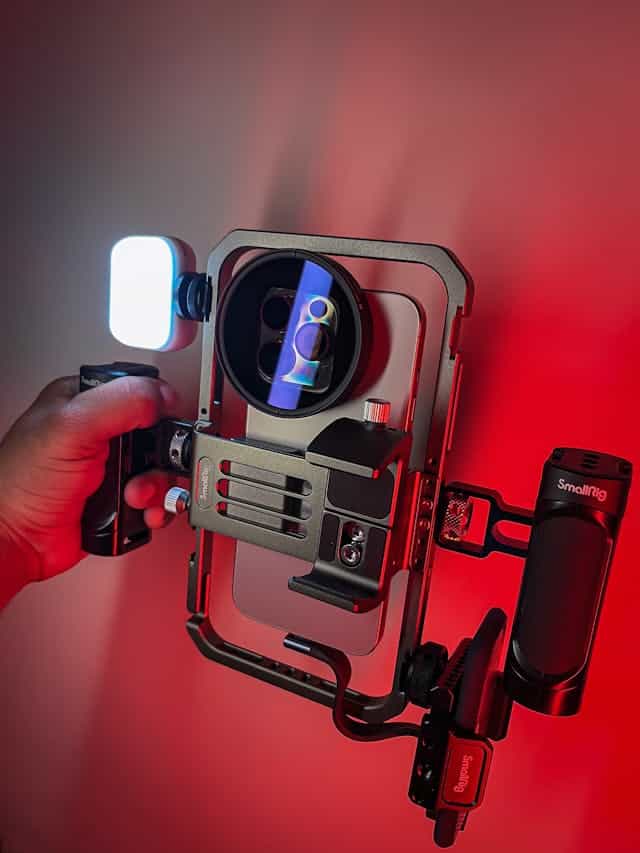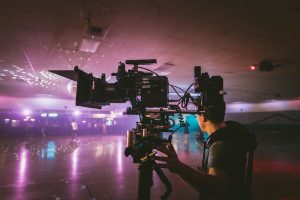
AI tools are changing the entertainment industry. Film and video production is undergoing a massive transformation, for better or for worse, thanks to advancements in artificial intelligence (AI). From editing and motion graphics to color grading and scriptwriting, AI is reshaping the creative process, allowing filmmakers, content creators, and production teams to work more efficiently while pushing the boundaries of visual storytelling.
1. AI in Video Editing: Speed and Precision
One of the most significant areas where AI is making an impact is video editing. Traditionally, editing is a time-consuming task that requires human editors to sift through hours of footage to create a cohesive narrative. AI now offers automated tools that can accelerate this process by assisting with basic tasks such as trimming, scene detection, and content sorting.
Key AI Editing Tools:
- Adobe Premiere Pro: Generative Extend (currently in Beta App) will add frames, extending audio and video filling in additional material where there was none before. Also integrated into Adobe Premiere Pro is Adobe Sensei to analyze scenes, detect cuts, and organize clips efficiently. It even recognizes specific moments within a video, like the presence of people or key actions, helping editors quickly locate the footage they need.
- Magisto: A tool for automated video creation, Magisto allows users to upload footage, and its AI engine analyzes the content to automatically generate a video with optimized scenes, music, and transitions. It’s especially useful for creators who need high-quality content in a short amount of time.
- Wisecut: This AI tool automates the video editing process for creators, specifically focusing on trimming and cutting videos according to speech and sound. It uses voice recognition to cut silences, add background music, and include subtitles based on audio cues.
These AI-driven tools enable editors to focus on the creative aspect rather than getting bogged down in repetitive tasks.
2. AI in Motion Graphics: Automated Animation and Effects
Motion graphics are a vital part of video production, especially for brand-related videos, advertisements, and dynamic intros. Creating animations or effects manually takes considerable effort, but AI is simplifying this process by generating animations based on inputs like text, images, and sound, saving time without sacrificing quality.
Key AI Motion Graphics Tools:
- Runway ML: Runway ML is a creative tool powered by machine learning that simplifies the process of generating motion graphics and video effects. With its text-to-video features, users can input a simple command, and the AI generates custom visual effects or animations based on the description. It also supports green-screen effects and rotoscoping, helping creators remove or replace backgrounds with ease.
- Artlist Motion Array: While known primarily for stock media, Motion Array has AI-powered features that assist in creating custom animations. For instance, AI can auto-generate motion graphics templates and apply visual effects automatically based on the desired aesthetic or theme.
AI is also enabling real-time rendering of 3D graphics, which is valuable for live streaming and virtual production environments.
3. AI in Color Grading: Precision and Consistency
Color grading is a critical component of video production that ensures visual consistency and evokes specific moods. Traditionally, colorists manually adjust the color and lighting of footage, but AI is now revolutionizing this process by automatically analyzing scenes and suggesting optimal color palettes.
Key AI Color Grading Tools:
- DaVinci Resolve’s Neural Engine**: This tool, embedded in DaVinci Resolve, is powered by AI and helps with automatic color grading by recognizing faces, scenes, and lighting environments. The Neural Engine also offers smart tracking, which identifies subjects and keeps them color-graded consistently throughout the entire video.
- Colourlab AI: Colourlab uses AI to automate the color grading process while giving users control over the final look. It can match the color tones from one film to another or suggest ideal color grades based on the style of popular films. This AI tool significantly reduces the time it takes to complete color grading tasks while ensuring that the artistic vision remains intact.
With these tools, color grading becomes not only faster but also more precise, allowing creators to focus on perfecting the emotional tone of their work.
4. AI in Scriptwriting: Generating Ideas and Dialogue
Writing scripts or storylines has traditionally been the domain of human creativity, but AI is becoming an assistant in this process too. While AI-generated scripts might not replace human writers entirely, it can assist in brainstorming, idea generation, and even dialogue creation.
Key AI Scriptwriting Tools:
- Squibler: An AI-powered tool for screenwriters, Squibler helps generate ideas, write entire scenes, or even dialogues based on a prompt. It’s particularly useful in overcoming writer’s block or for generating new ideas for a story arc.
- ChatGPT: OpenAI’s ChatGPT can assist writers in scriptwriting by generating dialogue, scene descriptions, and story plots based on the user’s input. It can even adapt its tone and style based on the desired genre, whether it’s a comedy, drama, or action-packed film. Only drawback is that it has trouble with full length screenplays.
These AI tools are excellent for pre-production, allowing writers to iterate faster and come up with creative ideas they might not have considered.
5. AI in Visual Effects (VFX): Real-Time Rendering and Object Tracking
Visual effects are among the most technically demanding aspects of video production. AI simplifies many complex VFX tasks by offering real-time tracking, rendering, and even generating visual effects from scratch.
Key AI VFX Tools:
- DeepMotion: This AI-based tool offers real-time motion tracking for character animation. It can analyze footage and transfer human movements to 3D models, making it easier for animators to create realistic character animations.
- Wonder Dynamics: This tool allows creators to automatically add CGI characters into live-action scenes. Using AI, it tracks objects and actors, adjusting lighting, positioning, and interactions between live-action elements and CGI characters seamlessly.
AI tools like these enhance the overall quality and realism of VFX, enabling more complex visual effects to be created at a fraction of the traditional cost and time.
6. AI-Assisted Sound Design: Automating Audio Mastery
Sound design, including background music, sound effects, and mixing, is essential to creating immersive video content. AI-driven sound design tools now enable automatic syncing of audio to visuals, the generation of sound effects, and even automated sound mixing.
Key AI Sound Design Tools:
- AIVA (Artificial Intelligence Virtual Artist): AIVA composes original music tailored to specific moods or scenes in a video. It allows filmmakers and creators to generate background scores automatically, reducing the need to source or license music.
- Elevenlabs.io: Known for its AI-powered text to sound generator, this powerful tool helps you design sound effects for your video content and customized voice over.
With these tools, creators can ensure high-quality audio without needing advanced sound engineering skills.
The Future of AI in Video Production
AI is no longer a futuristic concept in video production; it’s a present reality that is reshaping every aspect of the process. From automating tedious editing tasks to revolutionizing motion graphics, color grading, and even scriptwriting, AI enables creators to focus more on storytelling and creative expression. Tools like **Adobe Sensei**, **Runway ML**, **DaVinci Resolve**, and **DeepStory** are leading the way, and as AI technology continues to evolve, the possibilities for video production will expand even further.
As AI becomes increasingly integrated into the video production workflow, we can expect to see even more impressive, visually captivating content produced in less time and with greater creative freedom. The future of video production is undoubtedly AI-powered.



